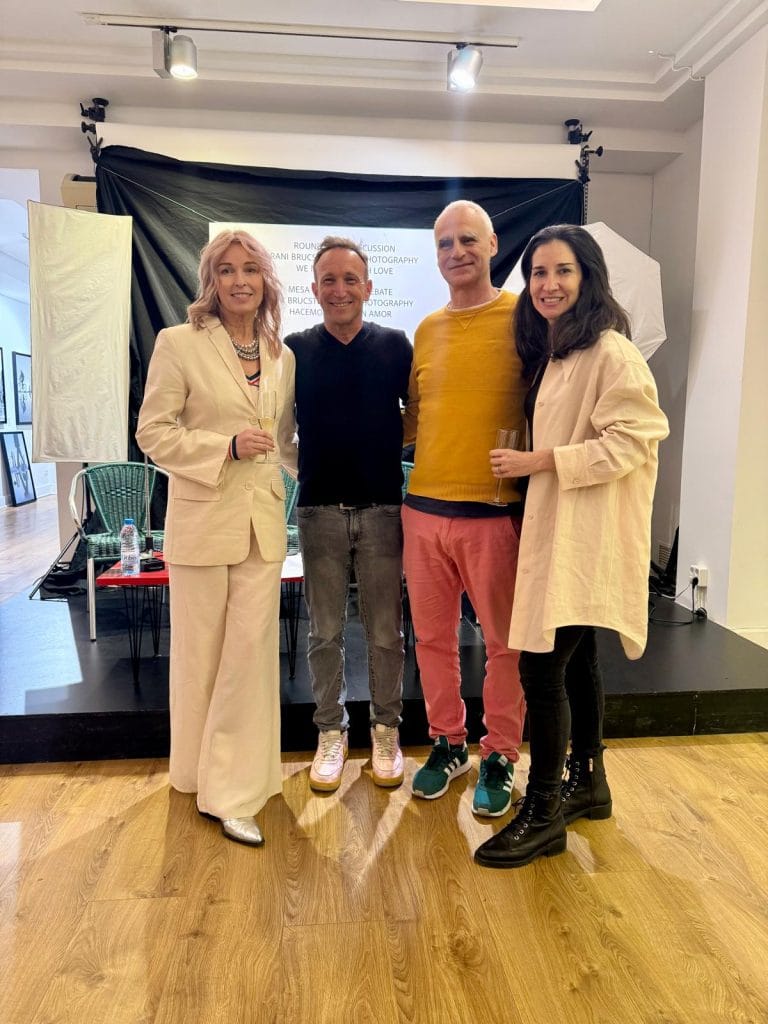Yesterday, we took part in a roundtable discussion on art and photography. There were four of us on the panel: two men and two women — perfect parity. I shared the table with Carla Armengol, Ulrika Talling-Smith, and Rani Bruchstein. We were fortunate to have both an in-person audience and attendees joining us online. I truly enjoyed everything I learned during the session.
It’s not my first time in front of a camera, nor my first time speaking at conferences or workshops. So when something manages to surprise me, I feel grateful. Many topics were discussed, and from a perspective somewhat different from what I’m used to. In many cases, the questions revolved around the artist’s relationship with their work. I’m not talking about the old debate on whether art should be separated from the artist, but rather about how passion drives us to create and how our personal lives influence our work.
Nothing too different from what happens to everyone else, but in the case of artists, this influence can be seen as a virtue, a flaw, or even the sublimation of the human condition. It all depends on the artist and on who is asking the question. In the end, we all admitted, in one way or another, that we are victims of our own humanity. The interesting part is how we each develop strategies to navigate that reality.
I don’t want to reinterpret what my fellow panelists expressed—they did so brilliantly—but I do want to highlight that we all share the view that our work is both a refuge and a platform. The act of creation is a unique and almost magical space where we explore emotions and private territories, but it is also a platform for connecting with our audience, a kind of flesh-and-blood social network. Ulrika experiences her work as a global endeavor, where relationships with artists and the very act of exhibiting become part of her artistic expression.
For Rani, it’s a process that takes time to develop, and the session itself is merely the necessary culmination of everything that has come before. For Carla, it is the result of a personal gamble—bold, solid, and uniquely her own. As for me, I experience it as a vital necessity, as natural as breathing, but infused with observation and synthesis.
After the discussion, it was time for audience questions. One of them caught my attention—not because I hadn’t heard it before, but because it was the first time I had to answer it directly:
“Does the artist’s gender influence the final outcome of their work?”
I believe the talk was recorded, so you’ll be able to watch our answers, but here is my take. As human beings, we have the ability to leave a personal imprint on what we create. This happens regardless of talent; all it takes is developing that ability and wanting to use it. I’m not talking about creativity, but about originality. Creativity can be trained. Talent, too. But originality… that, I’m not so sure about. And in my opinion, originality has nothing to do with gender.
If what we create is truly genuine and not a mere copy, none of us will ever arrive at the same results, because we are all different. Regardless of gender. So then, why do we see patterns in the way artworks take shape? Because nothing is black and white. We all have fears, experiences, hopes, beliefs, culture, goals, families, children… A countless number of factors shape us. And our art is shaped by them, too. Only when we reach a deep enough spiritual connection can our work transcend all of that. That is the moment when art ceases to have gender.
In my case, I’ve only managed to do so in fleeting moments. But at least—I have been there.
If you couldn’t attend this time, sign up for the newsletter to stay informed about upcoming talks.
Recommended reading on gender bias in art
- The Conversation – Male artists dominate galleries. Our research explored if it’s because “women don’t paint very well” – or just discrimination
- KyivGallery – Why is “female” art valued less than “male” art?
- Artnet News – Viewers preferred works by women artists, but assumed works by men were more famous and valuable
- William-klein-arte-y-presente/
If you couldn’t attend this time, subscribe to the newsletter to stay informed about upcoming talks.

